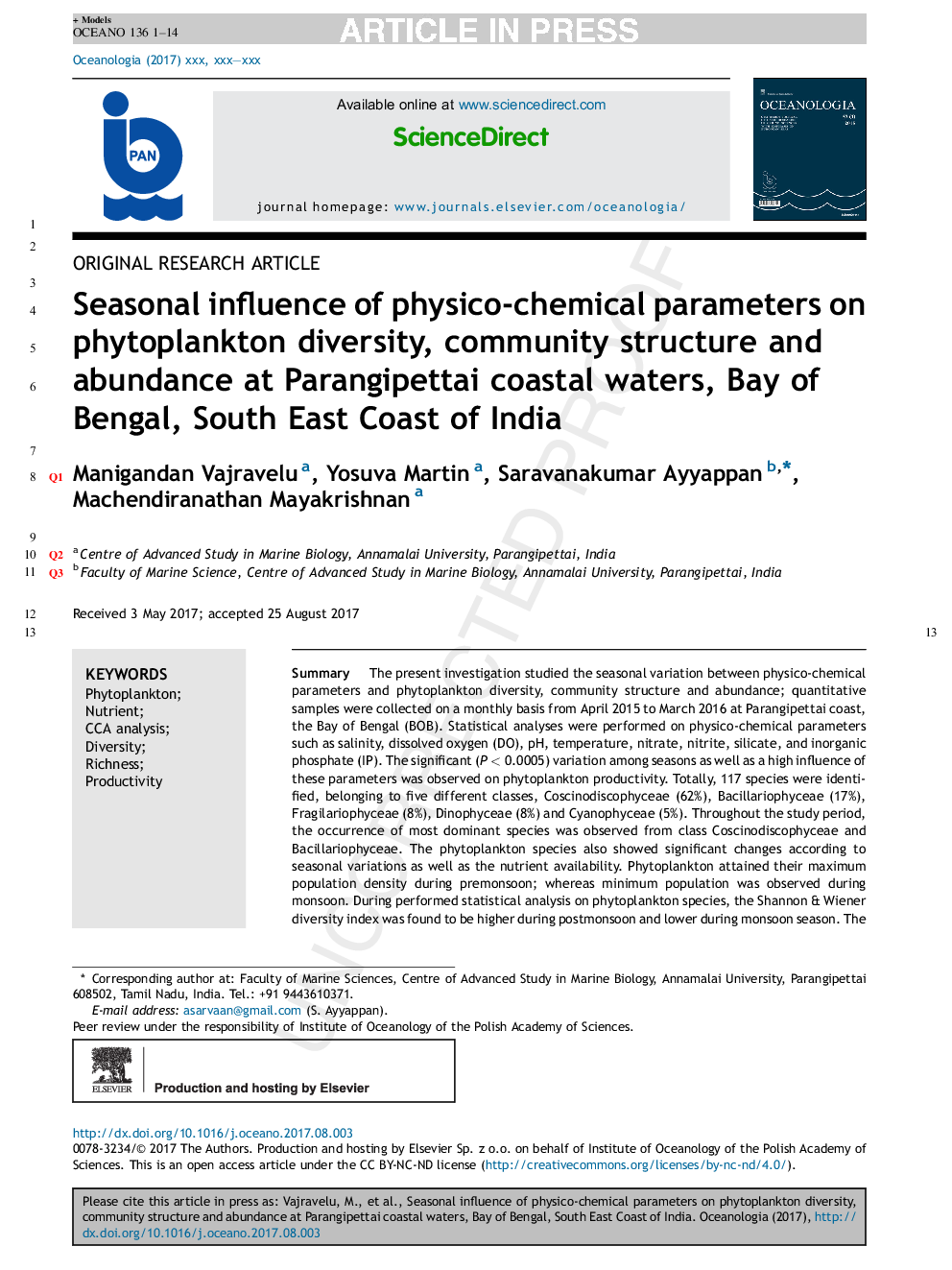| Article ID | Journal | Published Year | Pages | File Type |
|---|---|---|---|---|
| 8399748 | Oceanologia | 2018 | 14 Pages |
Abstract
The present investigation studied the seasonal variation between physico-chemical parameters and phytoplankton diversity, community structure and abundance; quantitative samples were collected on a monthly basis from April 2015 to March 2016 at Parangipettai coast, the Bay of Bengal (BOB). Statistical analyses were performed on physico-chemical parameters such as salinity, dissolved oxygen (DO), pH, temperature, nitrate, nitrite, silicate, and inorganic phosphate (IP). The significant (PÂ <Â 0.0005) variation among seasons as well as a high influence of these parameters was observed on phytoplankton productivity. Totally, 117 species were identified, belonging to five different classes, Coscinodiscophyceae (62%), Bacillariophyceae (17%), Fragilariophyceae (8%), Dinophyceae (8%) and Cyanophyceae (5%). Throughout the study period, the occurrence of most dominant species was observed from class Coscinodiscophyceae and Bacillariophyceae. The phytoplankton species also showed significant changes according to seasonal variations as well as the nutrient availability. Phytoplankton attained their maximum population density during premonsoon; whereas minimum population was observed during monsoon. The performed statistical analysis on phytoplankton species, the Shannon & Wiener diversity index was found to be higher during postmonsoon and lower during monsoon season. The Canonical Correspondence Analysis (CCA) was used, to find out the seasonal relationship between phytoplankton and physicochemical parameters. Hence, the executed CCA results revealed that temperature, salinity, silicate, DO and IP have a higher influence on phytoplankton abundance.
Related Topics
Physical Sciences and Engineering
Earth and Planetary Sciences
Oceanography
Authors
Manigandan Vajravelu, Yosuva Martin, Saravanakumar Ayyappan, Machendiranathan Mayakrishnan,
